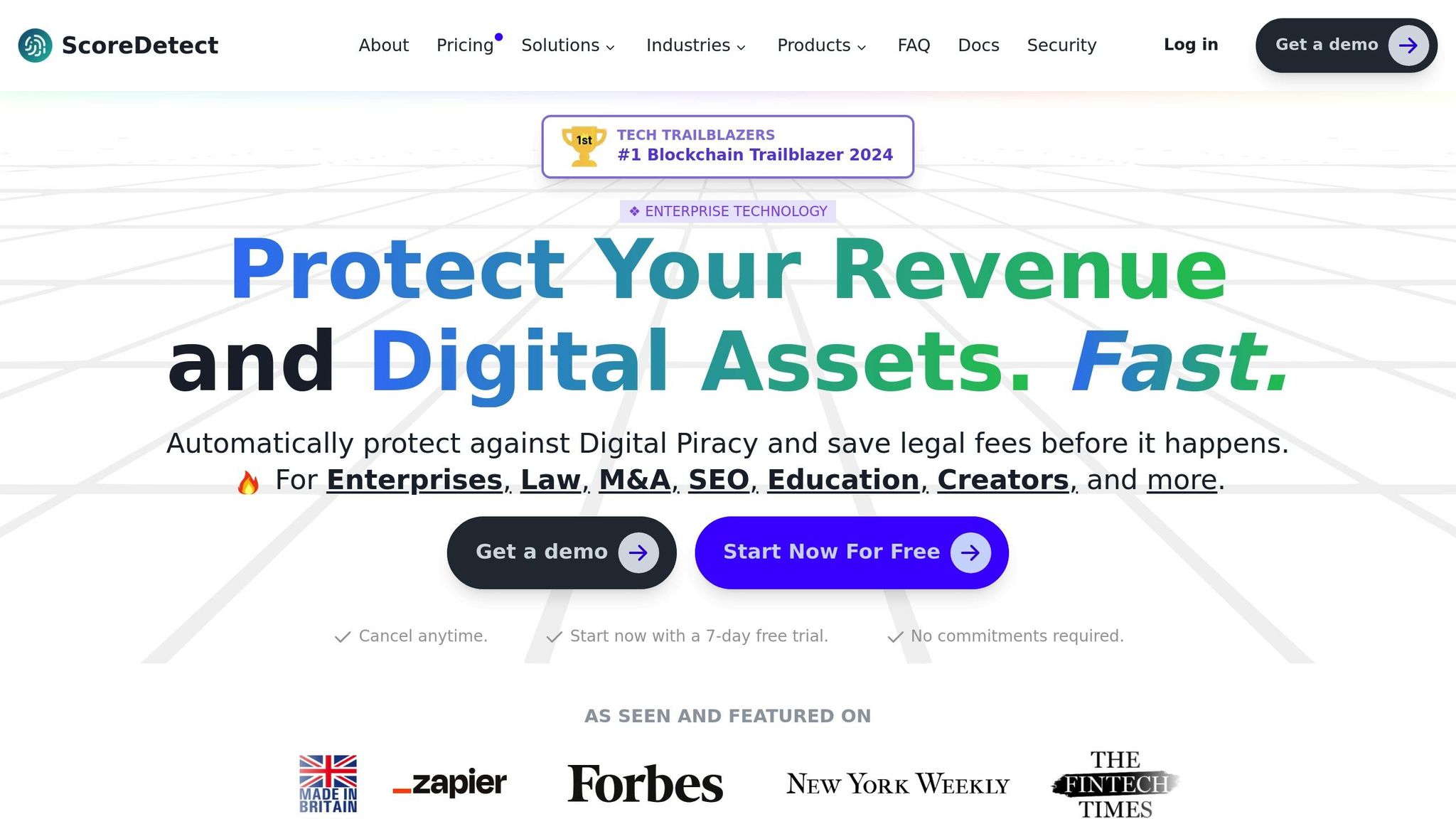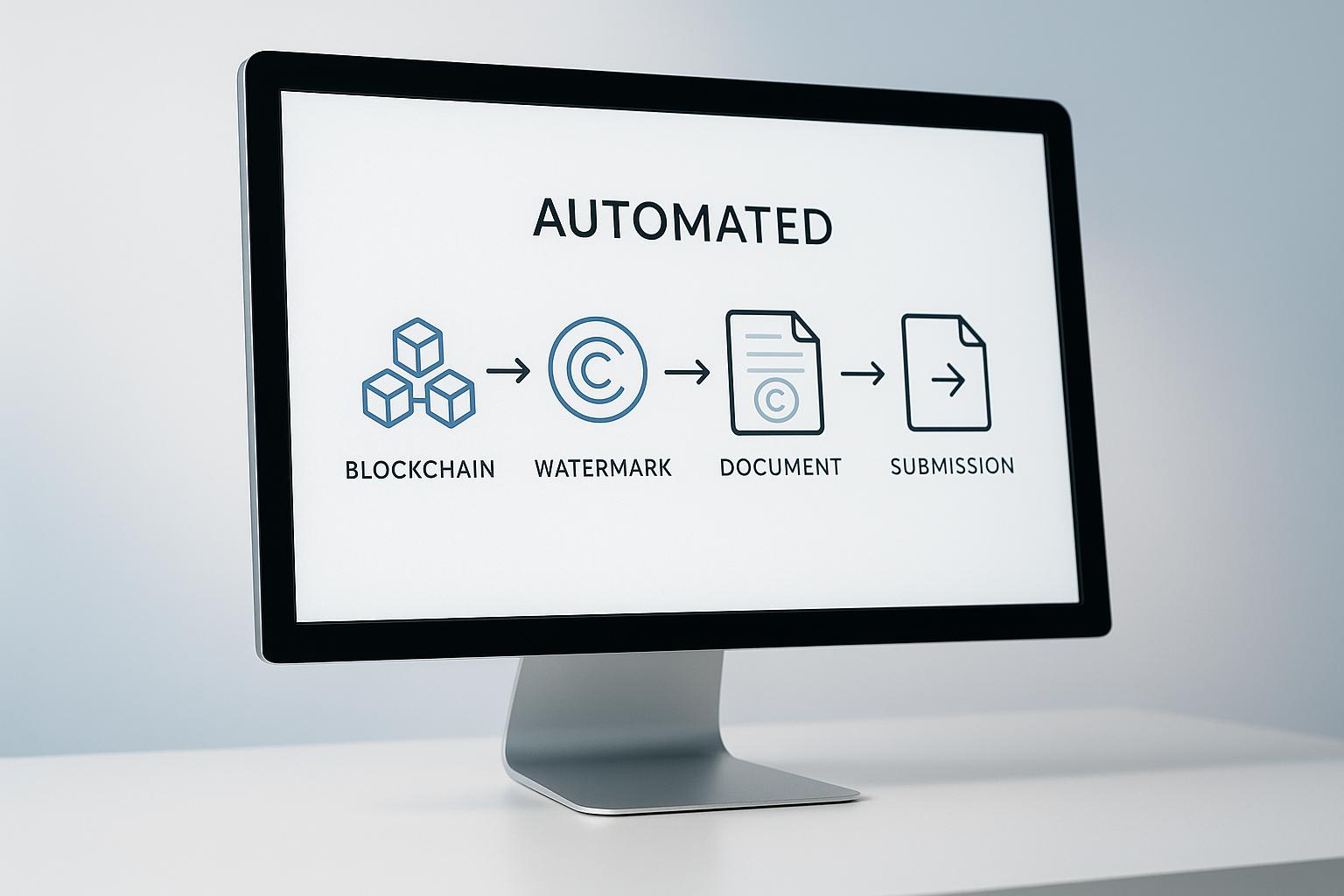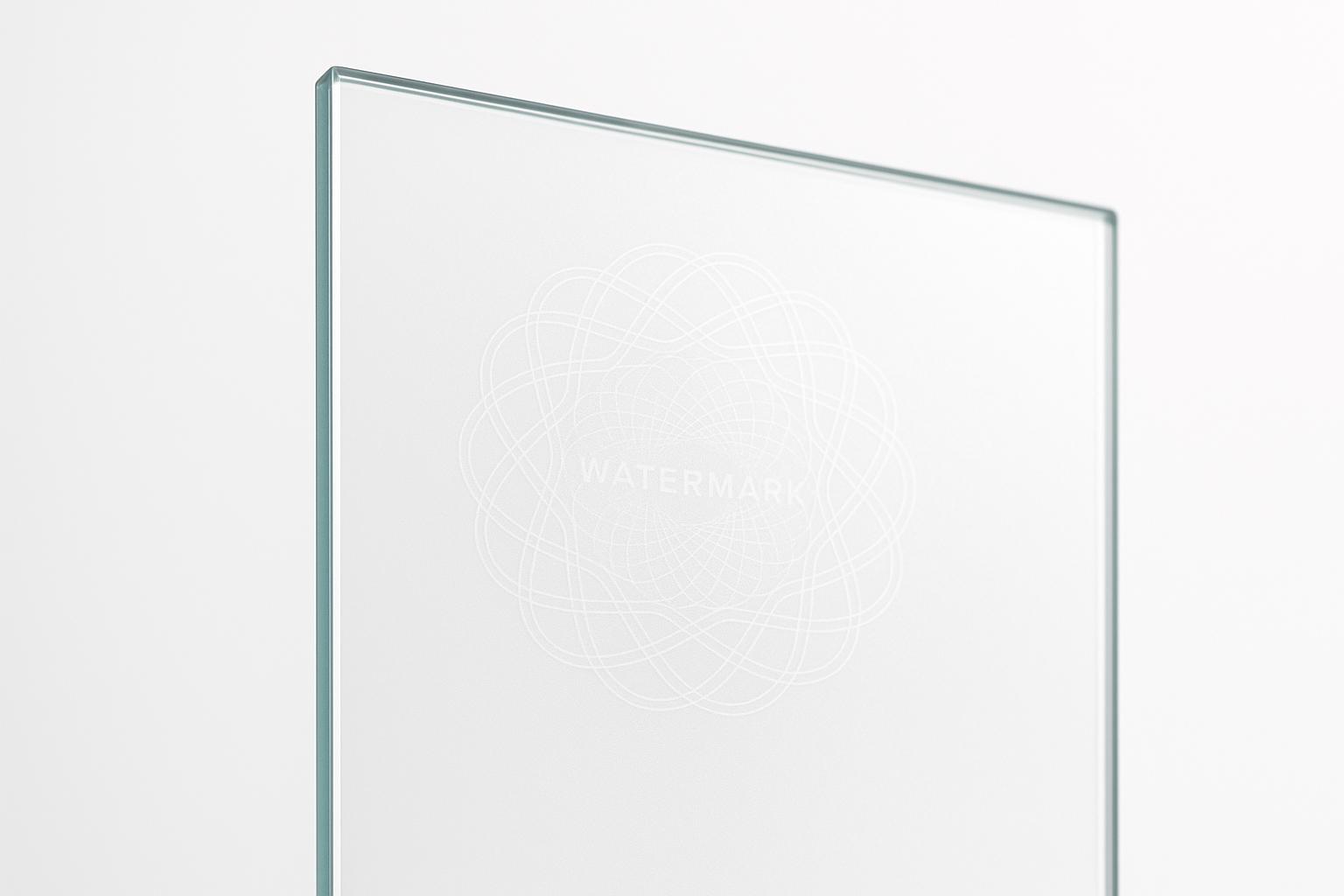If someone is sharing your copyrighted content on Facebook without permission, the DMCA takedown process can help you get it removed. Here’s a quick summary of the steps:
- Identify the Infringing Content: Use tools like Facebook’s Brand Rights Protection Tool, reverse image search, or manual monitoring to locate the content.
- Gather Evidence: Collect proof of ownership (like copyright certificates or original drafts), screenshots, URLs of the infringing post, and other supporting documents.
- Prepare Your DMCA Notice: Include your contact details, a description of your work, the infringing content’s URL, and a signed declaration of good faith.
- Submit the Notice: Use Facebook’s online copyright report form to file your request. Provide all required details for faster processing.
- Track and Respond: Monitor Facebook’s response. If the infringing party files a counter-notification, you may need to take further legal steps.
For large-scale content protection, automated tools like ScoreDetect can simplify monitoring and takedown processes.
Key Tip: Always document everything thoroughly to strengthen your claim and avoid delays.
How To Report Copyright On The Facebook Copyright Report Form
How to Prepare for a DMCA Takedown Request
Before filing a DMCA notice, it’s crucial to gather all necessary information and pinpoint the infringing content. Proper preparation not only ensures that your request meets legal standards but also improves the chances of a successful takedown.
How to Find Infringing Content
Tracking down unauthorized use of your copyrighted material on Facebook can be daunting due to the sheer volume of content shared daily. However, there are several effective methods to simplify the process:
Use Facebook’s Brand Rights Protection Tool
If you have access to Meta Business Suite, the Brand Rights Protection tool is a powerful resource for identifying infringing content on both Facebook and Instagram [3]. This tool supports multiple search methods, including:
- Keyword searches to find content related to your brand or work
- URL searches for specific web pages
- ID searches for particular posts or accounts
- Image searches using your original visual content
For image searches, always use saved images from your feed rather than screenshots. Saved images maintain higher quality, leading to more accurate results [3].
Monitor Facebook Ads
Infringement often occurs in Facebook’s advertising space, where unauthorized users might promote products using your copyrighted material. Regularly check Facebook ads for violations by searching keywords tied to your brand, products, or services [4].
Leverage Reverse Image Search
For copyrighted visual works like photos or graphics, reverse image search tools can help uncover unauthorized usage. Upload your original images into these tools to locate similar or identical content on Facebook [4].
Document Your Findings
Once you identify potentially infringing content, document everything thoroughly. Take clear screenshots that include the URL, posting date, and user details. This evidence will be crucial when filing your DMCA request [4].
After you’ve located the infringing material, organize your evidence and ownership documents to prepare a complete and compelling DMCA notice.
What Information You Need to Collect
Filing a DMCA takedown request requires specific details to establish your ownership and clearly identify the infringement. Gathering this information ahead of time streamlines the process.
Proof of Copyright Ownership
Establishing ownership is the cornerstone of any DMCA claim. Collect documents such as copyright certificates, original drafts, dated works, licensing agreements, or relevant correspondence that prove your rights [5].
Your Contact Information
Facebook requires detailed contact information for the copyright owner or their authorized representative. Include your full legal name, mailing address, phone number, and email. If you’re acting on someone else’s behalf, provide documentation that proves you’re authorized to represent them.
Description of Your Copyrighted Work
Provide a detailed description of the original work being infringed. Include specifics such as the title, creation date, publication details, and any registration numbers. For visual works, attach the original image or a link to its legitimate publication.
Identification of Infringing Content
Clearly identify the infringing Facebook post by providing its URL and a brief explanation of the violation. Detail how the content matches your original work and why you believe it infringes on your copyright.
Good Faith and Accuracy Statements
Include a statement affirming your claim’s validity and your status as the copyright owner or authorized representative. This declaration, made under penalty of perjury, is a legal requirement and underscores the seriousness of your claim.
Supporting Documentation
Additional evidence can strengthen your case. Examples include:
- Creation metadata from digital files showing authorship
- Publication records proving first use
- Licensing agreements that detail distribution rights
- Previous takedown notices for the same content on other platforms
The case of Lenz v. Universal Music Corp. highlights the importance of accurate ownership claims. Misrepresenting copyright ownership can lead to legal consequences, as the court ruled that false claims could result in enforcement actions [5].
"Gathering evidence of ownership is essential in a copyright claim since it serves as proof that the individual or entity asserting the copyright holds the legal rights to the creative work." [5]
How to File a DMCA Takedown on Facebook
Filing a DMCA request on Facebook is a simple process, especially if you have all your documentation ready. Facebook has made its copyright reporting system user-friendly while ensuring it adheres to legal standards.
How to Access Facebook’s Copyright Report Form
Facebook offers a dedicated online form specifically for reporting copyright infringement. You can find this form in Facebook’s Help Center [2]. Using this form is the quickest and most efficient way to file a DMCA request [1][6].
Before starting, make sure you meet the eligibility criteria. You must either be the copyright owner or an authorized representative acting on their behalf [2]. If you’re filing on someone else’s behalf, ensure you have authorization documents ready, as Facebook may request proof of your authority.
To save time, gather all the necessary evidence before you begin so you can complete the form in one sitting. Here’s what you need to know about filling out the form correctly.
How to Complete the Form
Facebook’s copyright report form is divided into sections, each requiring specific details. Here’s a breakdown of what to include:
Contact Information
Start by entering your full contact details, including your name, mailing address, email address, and the country where you’re filing from [2]. If possible, use your business address and contact details instead of personal ones for privacy reasons [2].
If you’re filing as an authorized representative, Facebook will display the copyright owner’s organization or name instead of your own [7].
Details About Your Original Content
Provide URLs that link to your copyrighted work. This could include links to the content on Facebook, your website, or any other online platform where it appears [2]. Including these URLs helps establish ownership and speeds up the review process [2].
Identifying the Infringing Content
Next, pinpoint the content that violates your copyright. Add URLs to the specific posts or pages containing the infringing material [2]. Be thorough and include a URL for each instance of infringement.
Reason for Filing
Use the dropdown menu to select the reason you’re filing the report. Pick the option that best describes your situation, as this helps Facebook prioritize and organize your complaint [2].
Additional Information
There’s also a section for any extra details that could support your claim. For example, you can include links to your brand’s website or a trademark registration if applicable [2]. This is your chance to provide any context that might strengthen your case.
Good Faith Declaration
The final section includes a declaration where you confirm, under penalty of perjury, that you own the content or are authorized to act on behalf of the owner. You’ll need to sign this to complete the form.
How to Submit the Request
Before submitting, double-check all the details. Confirm that the URLs are accurate, your contact information is up to date, and the declaration is signed. Once everything is verified, click the "Submit" button to send your report to Facebook [2].
After submission, Facebook will send a confirmation and begin reviewing your request. While response times can vary, including as much information as possible upfront can help speed up the process [2]. Updates on your case will be sent to the email address you provided in the form, keeping you informed every step of the way.
sbb-itb-738ac1e
What Happens After You Submit Your Request
Once you submit your request, Facebook begins its review process. Knowing what to expect can help you prepare for the possible outcomes and understand how to proceed if further action is required.
Facebook’s Review Process
Facebook examines the evidence you provide to assess your claim and decides whether to approve or deny your request [2]. If the evidence supports your case, the infringing content is removed from the platform. However, response times can vary widely – from just a few hours to over a week. While submitting detailed and thorough information upfront can sometimes help, it doesn’t guarantee a quick resolution [2].
Facebook highlights its commitment to handling appeals efficiently in its Help Center:
"Upon receiving a valid appeal, we will review it expeditiously. Appeals can often be resolved quickly when our requests for further information are responded to promptly, where the content in question is not infringing and does not violate our Terms of Service or Community Standards, or where the initial report was a mistake. Appeal decisions can take longer in circumstances where further review is needed." [8]
The outcome of this review determines the next steps in the process.
Possible Results and Counter-Notifications
If Facebook approves your request, the infringing content will be removed. A denial, however, suggests that the provided evidence wasn’t sufficient. In either case, carefully review Facebook’s response to decide if additional documentation or action is necessary [2].
Counter-Notification Process
If the infringing party appeals the takedown, Facebook will notify you immediately. At that point, you’ll have 10 to 14 business days to take further legal action against the infringer [2]. If you don’t respond within this timeframe, the content will be automatically reinstated. To strengthen your position, be ready to provide additional evidence during this period. Acting within the 10 to 14 business days is crucial to prevent the content from being restored.
Using ScoreDetect to Simplify the Process

When it comes to managing DMCA takedowns, manual methods often fall short, especially when dealing with massive amounts of content. This is where automated tools like ScoreDetect come into play, offering a scalable and efficient alternative.
Tackling Intellectual Property Challenges
Platforms like Facebook, with its staggering 2.95 billion monthly active users [4], present a monumental challenge for businesses trying to protect their intellectual property. Monitoring such a vast amount of content manually is virtually impossible. Automated solutions like ScoreDetect step in to fill this gap, providing the comprehensive protection that manual methods simply can’t match.
Automated Discovery and Takedown
The traditional DMCA process on Facebook involves time-consuming manual documentation. ScoreDetect eliminates much of this hassle by using advanced technologies like machine learning, image recognition, and artificial intelligence. These tools detect unauthorized content with an impressive 95% accuracy rate and send automated takedown notices, achieving a 96% removal rate – far surpassing manual efforts.
This automated system allows businesses to address multiple infringements at once, bypassing the tedious process of filing individual reports. For large-scale operations, ScoreDetect can timestamp and verify hundreds of pieces of content in a single day, making it a game-changer for enterprise-level protection [10].
Advanced Features for Content Protection
ScoreDetect doesn’t stop at takedowns – it also offers proactive tools to safeguard your digital assets. One standout feature is its blockchain-based timestamping, which provides verifiable proof of ownership. This is particularly useful when filing DMCA requests or pursuing legal action, as it strengthens your case with solid evidence.
Another key feature is watermarking technology, which helps deter unauthorized use before it even happens. By adding an extra layer of protection, this reduces the need for repeated takedown requests and ensures your content remains secure.
For seamless integration, ScoreDetect works with platforms like Zapier, connecting to over 6,000 web apps. For example, it can automatically verify new WordPress posts as they’re published or timestamp updated content whenever significant changes are made [9][10]. These features not only streamline workflows but also help marketing teams improve rankings while minimizing content theft.
SEO Benefits and User Feedback
For content creators and businesses worried about SEO, ScoreDetect offers a distinct edge. Websites with robust, verifiable E-E-A-T (Experience, Expertise, Authoritativeness, and Trustworthiness) signals experienced a 37% lower negative impact rate compared to those with weaker verification signals [10]. And with ScoreDetect, the verification process takes seconds, not hours, making it an efficient solution for protecting content at scale.
Users frequently highlight the platform’s ease of use, seamless implementation, and automation as major advantages. It not only boosts confidence in content protection but also aligns with Google’s quality guidelines, enhancing both security and performance.
"ScoreDetect offers the most user-friendly, SEO-focused implementation I’ve found for content protection. Its speed, integrations, and clear alignment with Google’s quality guidelines make it my top recommendation for content creators serious about both protection and performance." – Brian Winum [10]
Protecting Your Digital Assets on Facebook
Keeping your digital assets safe on Facebook starts with understanding the platform’s DMCA process and leveraging the right tools. The DMCA takedown process involves several steps: identifying the infringing content, gathering evidence like screenshots and URLs, proving ownership, accessing Facebook’s copyright report form, filling it out with all necessary details, and then tracking the status of your request [11][12][13].
Having clear documentation, such as screenshots and URLs of the infringing material, makes the process smoother [11][13]. This evidence is also critical if you face disputes or counter-notifications.
Facebook usually processes claims within about three days if all the required information is submitted [15]. However, manual monitoring can be a challenge due to inconsistent takedown procedures, lengthy reporting processes, and repeated violations [12][14]. These challenges highlight why automated systems are essential for efficient protection.
For businesses and creators managing large amounts of content, manual monitoring simply isn’t practical [15]. Advanced tools like invisible watermarking, AI-powered monitoring, and blockchain verification can provide scalable and effective protection.
Ongoing vigilance is key since infringers often repost content or create new accounts [12]. Regularly check your Facebook assets to quickly spot and address any violations [15]. For persistent offenders, escalate the issue through Facebook’s support team or consider legal action if necessary [15].
A strong defense combines proactive measures with reactive enforcement. Use invisible watermarking to discourage unauthorized use, implement automated monitoring systems, and streamline your takedown processes. Together, these strategies create a multi-layered approach that not only protects your content but also improves the efficiency of your DMCA efforts.
To truly scale your copyright protection, integrate tools like AI and blockchain into your workflows [12]. These technologies reduce manual effort while increasing the effectiveness of your takedown requests, ensuring your digital assets are secure on Facebook.
FAQs
What happens if someone files a counter-notification after I submit a DMCA takedown request on Facebook?
If the other party submits a counter-notification in response to your DMCA takedown request, Facebook will review it to confirm that it meets the necessary legal standards. A valid counter-notification generally includes the infringer’s name, address, phone number, and a statement contesting the takedown.
Once Facebook approves the counter-notification, they will notify you and provide a window of 10-14 business days to initiate a lawsuit to stop the content from being restored. If no legal action is taken within this timeframe, Facebook is obligated to reinstate the content in question. This process ensures a balanced opportunity for both sides to present their case.
How can I manually monitor and detect unauthorized use of my copyrighted content on Facebook?
To keep an eye out for unauthorized use of your copyrighted content on Facebook, start by conducting regular searches for posts, images, or videos that resemble your work. Tools like reverse image search can help you track down copies of your content across the internet. Pay attention to Facebook pages, groups, and ads that might feature suspicious or duplicated material.
Another handy option is Facebook’s Rights Manager, which allows you to track and manage your intellectual property directly on the platform. By staying proactive and routinely checking for your content, you can spot potential infringements even without automated systems.
What happens if I falsely claim copyright ownership in a DMCA takedown request?
Filing a false copyright claim in a DMCA takedown request can have serious legal repercussions. According to Section 512(f) of the DMCA, if you knowingly submit a false claim, you could be held responsible for damages, attorney’s fees, and other penalties.
Beyond that, misrepresentation might expose you to lawsuits for fraud or tortious interference. In extreme cases, it could even lead to criminal charges, such as perjury. To steer clear of these consequences, always double-check that your claims are accurate and backed by solid evidence.

